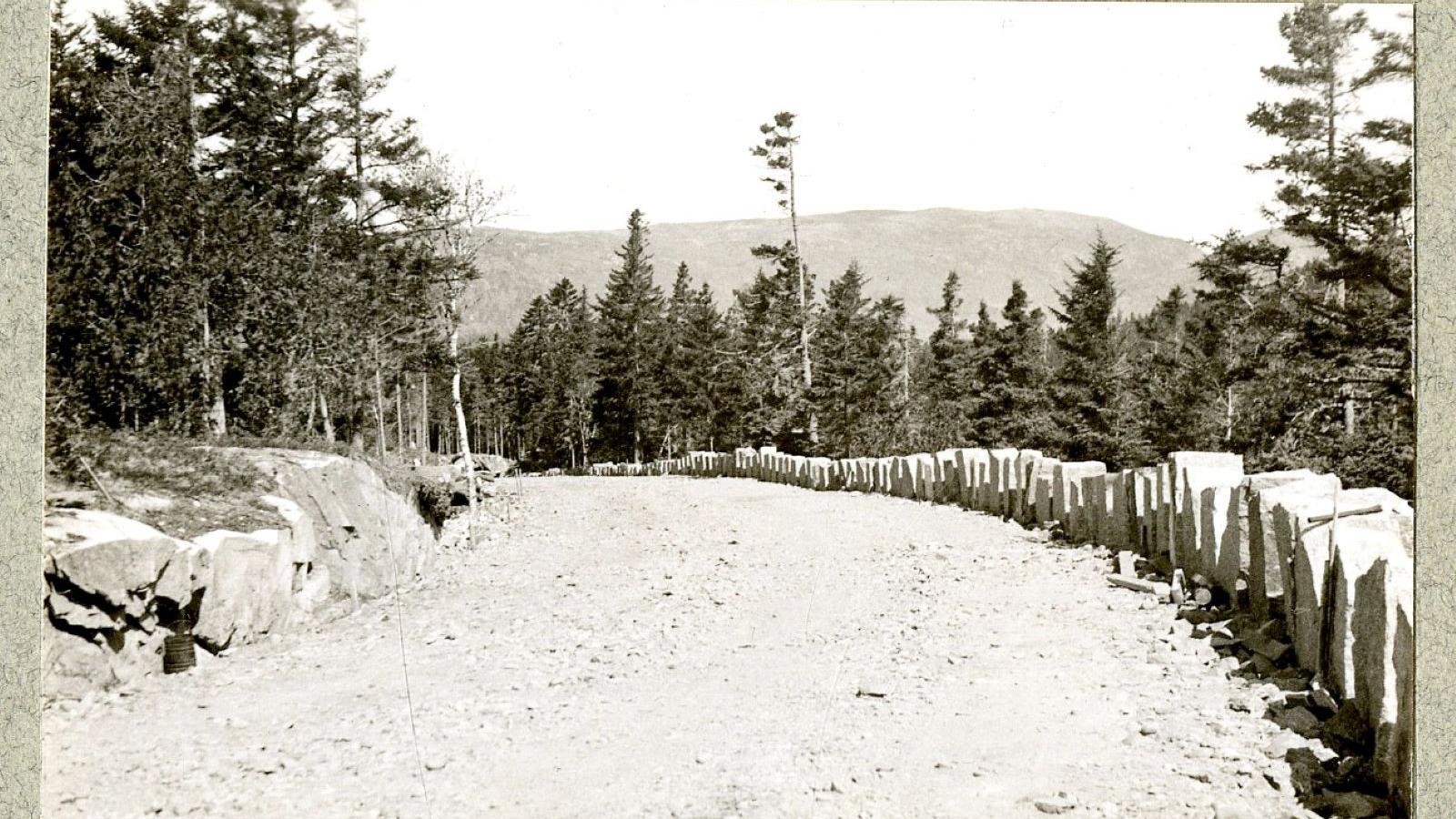Last updated: May 24, 2024
Place
Acadia National Park

Olmsted Archives, Job #09128, Mount Desert Island, ME
Quick Facts
Location:
Maine
Significance:
Olmsted Designed Park
The idea of preserving portions of Mount Desert Island to be made into a public park was first proposed by senior Olmsted Firm member Charles Eliot. After Eliot’s untimely death, his father and Harvard University President Charles W. Eliot worked to secure the land donations to honor his late son.
In 1916, the year Frederick Law Olmsted Jr.’s Organic Act would be signed into law, land in Mount Desert Island was acquired by the federal government. From 1908 until this point, automobiles were banned on the island due to a disagreement between permanent residents and summer visitors.
Summer resident John D. Rockefeller, seeing the inevitability of automobile use in the park with increased visitors, would help finance a loop road that would keep automobiles off the carriage roads and away from the park’s interior.
Olmsted Brothers joined the park in 1929 to recommend routes, locate scenic overlooks, and prepare engineering details for the loop road, with Olmsted Jr. taking the lead on this project. The National Park Loop Road Olmsted Brothers created provides automobiles access to numerous trails and attractions, like glacial lakes and Cadillac Mountain, the highest peak on the Atlantic Coast.
Source: "Acadia National Park," The Cultural Landscape Foundation
For more information and primary resources, please visit:
Olmsted Research Guide Online
Olmsted Archives on Flickr
In 1916, the year Frederick Law Olmsted Jr.’s Organic Act would be signed into law, land in Mount Desert Island was acquired by the federal government. From 1908 until this point, automobiles were banned on the island due to a disagreement between permanent residents and summer visitors.
Summer resident John D. Rockefeller, seeing the inevitability of automobile use in the park with increased visitors, would help finance a loop road that would keep automobiles off the carriage roads and away from the park’s interior.
Olmsted Brothers joined the park in 1929 to recommend routes, locate scenic overlooks, and prepare engineering details for the loop road, with Olmsted Jr. taking the lead on this project. The National Park Loop Road Olmsted Brothers created provides automobiles access to numerous trails and attractions, like glacial lakes and Cadillac Mountain, the highest peak on the Atlantic Coast.
Source: "Acadia National Park," The Cultural Landscape Foundation
For more information and primary resources, please visit:
Olmsted Research Guide Online
Olmsted Archives on Flickr
